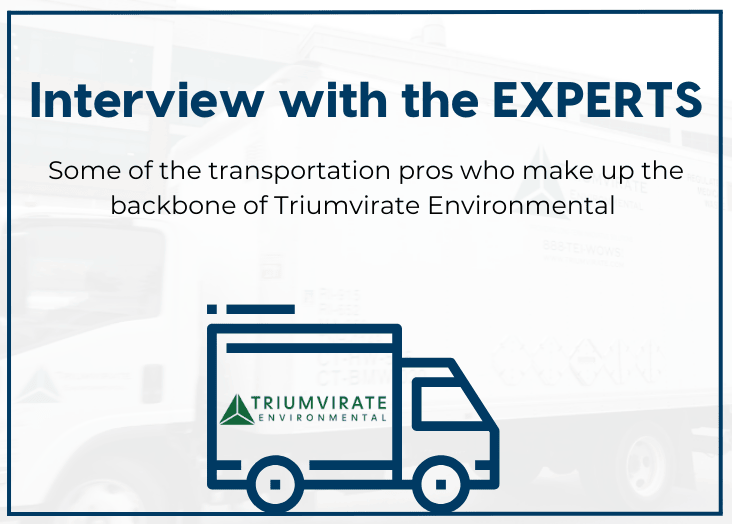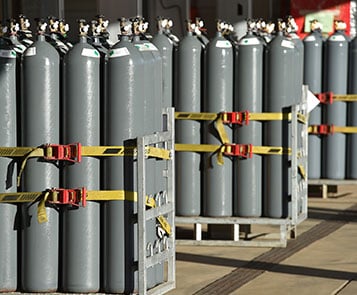Why Traditional EHS Approaches Won't Succeed
The environmental, health, and safety (EHS) industry is changing rapidly and profoundly, with tougher requirements, new metrics, and greater responsibilities. In a world changed by COVID-19 and the rising green and sustainability movements, those managers who can’t adapt to these new realities may lose their operational edge.
Luckily, EHS professionals can take their current skill sets and combine them with data-driven and flexible methods and platforms to succeed in this brave new world. This was the message of Triumvirate Environmental’s Michael Albert, EHS Director and EHSOne® Program Owner, in his June webinar, "Why Traditional EHS Approaches Won't Succeed." (The webinar is now available on-demand.) Albert is an industry veteran of 15-plus years, and has devoted much time and effort to interpreting the various shifts he says are profoundly affecting the industry.
EHS: New Directions
Says Albert: “EHS is at a crossroads. We’ve been at a crossroads probably for quite some time.” Perhaps the biggest seismic shift occurred when COVID-19 struck, and EHS managers had to oversee employee safety as never before.
Also, we’re hearing ever more about sustainability—a slippery concept that managers, individuals, and companies frequently define differently. Environmental, social, and governance (ESG) reporting is on many lips as well. And as the name indicates, it overlaps with EHS processes and reporting, as this blog has noted already.
Ultimately, it’s not just about waste disposal, employee safety, or other discrete EHS processes, he explains. It’s about a new, comprehensive approach that requires lots of data, C-suite buy-in, new reporting metrics and tools, and much more. Frequently, EHS managers are involved with big-picture planning with their own staff and teams, as well as with other departments—including top executives and human resources managers.
New EHS Management Requirements
The EHS managerial outlook requires a revamp to the new realities. “We’ve really got to look at it from a bigger picture perspective,” says Albert. The EHS professional is now taking a more powerful and significant role in the company—working closely with the organization’s top decision makers.
“Whether we [as EHS managers] roll up into an operations view or into a facilities view, we need a bigger seat at the table.” This, in many ways, applies to the smallest startups as well as the largest corporations.
Traditional EHS Field Moving Fast
As Albert observes, since COVID-19, game changers have arisen on every side: growing public environmental sensitivity; a higher demand for employee safety and engagement; stricter federal and state regulation; shareholder EHS reporting; a rapidly growing green movement; and on and on.
However, those organizations that embrace the new tools and methodologies will be in the best position to not just survive, but thrive. “Don’t resist the change,” as Albert says. As much as managers enjoy focusing on basic EHS processes—adhering to regulations, protecting employees and the environment—the new circumstances demand more.
Sustainability Impacting EHS
Sustainability, EHS, and ESG are separate concepts, but with growing overlaps, making the manager’s job ever more complex. The idea of sustainability—generally meaning to do business so that the environmental impact is minimal to nonexistent, is growing in importance, as Albert says.
During the webinar, Albert ran a poll asking: “Does your organization have an overall collaborative sustainability approach that includes EHS?” The response was that 51% did—another 20% reported into corporate on some specific metrics. Only 28% of respondents said their organization lacked any approach—or that they were unaware of any goals whatsoever.
However, as he observes: “Sustainability means so many different things to so many different people.” Various organizations have different sustainability targets—and frequently, smaller organizations don’t need to create sustainability goals at all.
Nevertheless, it’s a subject we need to talk about. In fact, there are potential customers out there that will pay more for goods made and sold by organizations that operate according to sustainable practices.
ESG a Rising Factor for EHS Managers
Then there is the controversial subject of ESG reporting, which mostly affects large public corporations and their shareholders. Albert ran another poll, to see to what degree the attendees were involved in ESG reporting.
In response, 39% of the webinar attendees say their companies are working on reporting on relevant metrics—17% report up on specific ESG-related metrics. An additional 45% say their organizations aren’t involved in ESG at all, or are too small to be involved with such reporting.
These results reflect Albert’s own experience in the industry and aren’t surprising. The takeaway with these initiatives is that they have real-world impact. As he explains, many managers are involved in ESG programs, sometimes without fully grasping what they entail. In some cases, managers are forcing ESG reporting where there aren’t actual real-world results—a practice known as “greenwashing.”
This is unnecessary, as some existing core EHS metrics—such as gas emission volumes—are also frequently part of ESG reporting. It's just a matter of extending some of the existing protocols, and so is within reach of many organizations already.
Real, Measurable Success for the New EHS
Obviously, relying on greenwashing won’t make a company succeed with ESG, sustainability, or any other EHS initiative. Instead of forcing impossible green goals on organizations unprepared to reach them, managers should take a “runway” approach. That involves taking small concrete steps to sustainability and green compliance.
“Start small,” says Albert. “It might hurt in the beginning a little bit, I’ve seen it. It might take a little while but then it starts to change. Then guess what? Your culture changes.” Over time, taking feedback and constructive critiques, you gain momentum in your program.
He outlines the outcomes: “And what you’re going to have, in effect, is lower operating margins, you’re going to hopefully have less incidents, you’re hopefully going to have a lot less waste going around and it’s going to have an effect on the bottom line.”
And what green goals you achieve, you should measure—and share with the rest of the organization to prove your value. And that is an avenue for success for you as an EHS manager in the new world of ESG, sustainability, green metrics, and the like.
EHS Adaptation Via Partners
Albert also suggests you can turn to a partner—one like Triumvirate Environmental—to assist you in reaching these goals. Triumvirate Environmental’s own 30 years’ experience in the EHS market reflects much of what has happened to the overall industry. There is so much more to the industry and to EHS success.
In response, the company offers a holistic program: EHSOne®: a revolutionary and unique master program for safety, compliance, and sustainability, now and into the future. It’s not just about disposing of client waste or enabling worker safety, and similar processes, although they are all among Triumvirate Enviromental’s core functions.
“We’ve evolved,” he says. “We help you when you need it how you need it.”
Ready to learn more? Watch the full webinar today.






